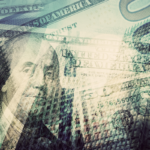CivicScience has been tracking “buy now, pay later” (BNPL) programs for some time, and our most recent data shows consumer experience with these fintech services has been flat quarter over quarter. But after Affirm’s successful IPO last week, where does the industry stand?
As CivicScience previously reported, Americans have been all about paying for wants and needs overtime, even for smaller purchases (of $50 or less). But despite this previous general interest, actual experience with BNPL programs hasn’t changed much, even during the pandemic.
In fact, the monthly aggregate of consumer interest in paying for low-cost items over time recently decreased.
Looking specifically at sentiment toward Affirm, the only gains since our last survey in August were among those who rated their experience as “neutral.”
While PayPal Credit still leads with the greatest percentage of positive experiences and lowest percentage of negatives, Klarna saw the largest jump in positive experiences since August (from 8% to 13%).
Considering BNPL is essentially ‘lay-away’ (either with or without interest), CivicScience looked to debt and spending trends to help explain the major differences in consumers’ experiences with the programs studied.
First, the data revealed a quarter-over-quarter decrease in consumer credit card debt between Jan. 1 and Dec. 31, 2020, which falls in line with what was recently reported by the Consumer Financial Protection Bureau.
In addition, people who reported having credit card debt in the last six months were more likely to have used a BNPL than those who reported no credit card debt. If those with credit card debt are heavier users, then it’s plausible that a drop in credit card debt could bring down overall usage of BNPL programs.
Second, Americans who have had their hours or pay reduced (or aren’t working or getting paid) during the pandemic are only slightly more likely to have used BNPL than people who are working as usual. Intent to use these programs is no higher for people who have faced employment challenges because of the pandemic.
Lastly, CivicScience tracking shows income has a significant impact on someone’s experience with payment plans. Usage and approval is essentially even across income brackets from those making $50K to more than $150K. The difference resides in approval — lower-income adults have tried but disliked BNPL at a higher rate.
Interestingly though, intent to use Affirm is highest among those making $50K or less. Not only that, but Affirm currently has greater positive experiences from people in the highest-income bracket, while its competitors Afterpay and Klarna can’t say the same.
As a side note, negative experiences are making up nearly one-third of all the programs studied except PayPal Credit. And while negative experiences in general tend to accumulate among those making less money, looking at experiences per program shows unhappy customers all over the board.
CivicScience is continuously monitoring how consumers feel about making purchases using programs like Affirm. You can expect an update as financial situations change with the economy.








